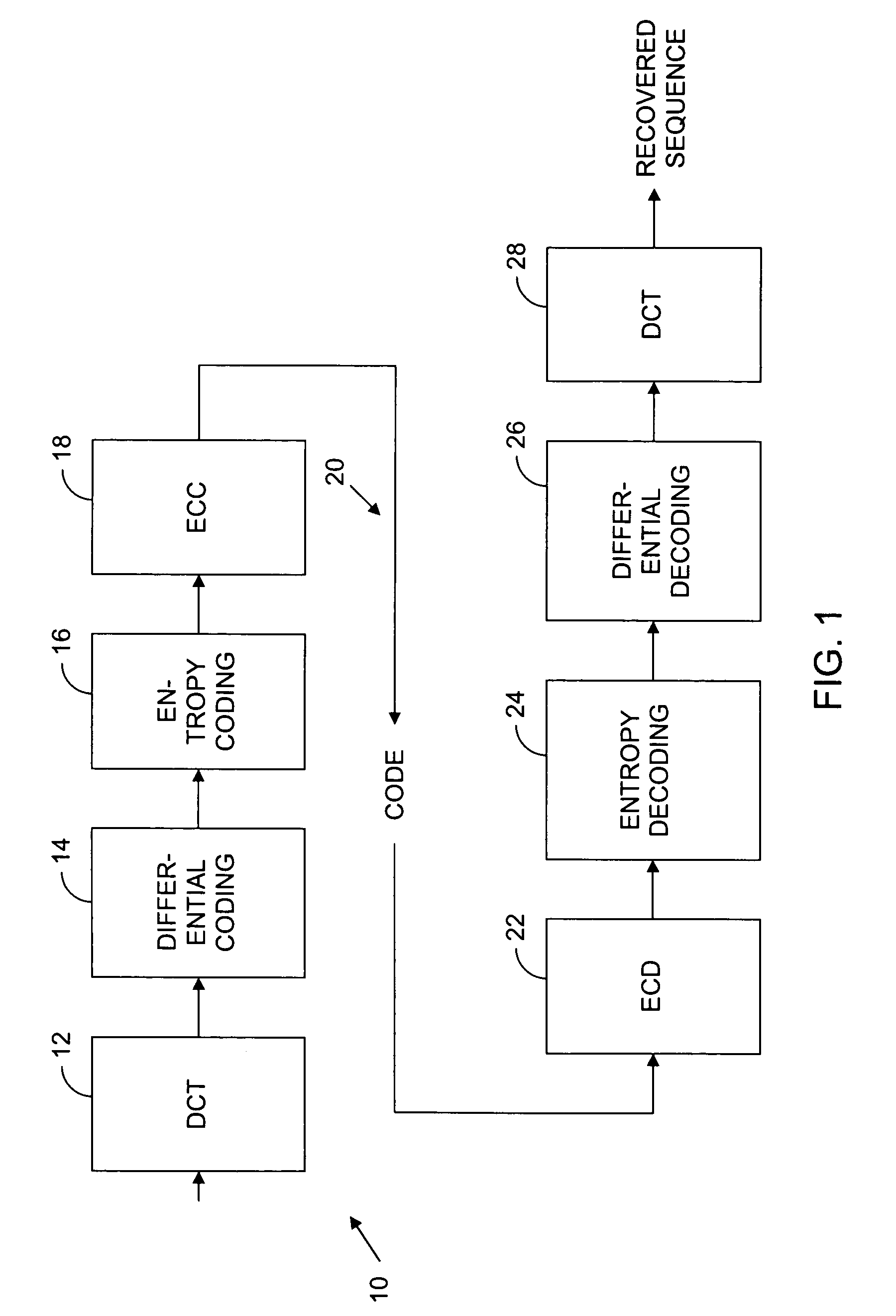Fast, practically optimal entropy coding
a technology of entropy and coding, applied in the field of entropy coding, can solve the problems of inability to decodable rounding of conventional combinatorial values to lower-resolution substitutes, inability to apply the rissanen approach in a straightforward way, and previous approaches to using short-mantissa substitutes for conventional combinatorial values were restricted to source sequences. , to achieve the effect of little storage spa
- Summary
- Abstract
- Description
- Claims
- Application Information
AI Technical Summary
Benefits of technology
Problems solved by technology
Method used
Image
Examples
Embodiment Construction
[0044]Before we consider ways in which the present invention can be implemented, we will briefly consider a typical environment in which an entropy encoder may be used. The entropy encoder may be a constituent of a composite encoder 10, usually one designed to operate on a specific type of source sequence. For instance, the encoder may be intended to encode sequences of symbols that represent values of image pixels. Framing information may be available, too, and the data may accordingly be subjected to, say, a two-dimensional discrete cosine transform 12. Some difference operation 14 may then be performed to express each value as a difference from one that came before.
[0045]Despite the differential operations, there is usually some skew in the resultant output's symbol distribution, and it is at this point that the entropy coding 16 may be employed to compress the data toward their entropy value. In some cases, some measure of redundancy will then be re-introduced by, say, error-cor...
PUM
 Login to View More
Login to View More Abstract
Description
Claims
Application Information
 Login to View More
Login to View More - R&D
- Intellectual Property
- Life Sciences
- Materials
- Tech Scout
- Unparalleled Data Quality
- Higher Quality Content
- 60% Fewer Hallucinations
Browse by: Latest US Patents, China's latest patents, Technical Efficacy Thesaurus, Application Domain, Technology Topic, Popular Technical Reports.
© 2025 PatSnap. All rights reserved.Legal|Privacy policy|Modern Slavery Act Transparency Statement|Sitemap|About US| Contact US: help@patsnap.com



